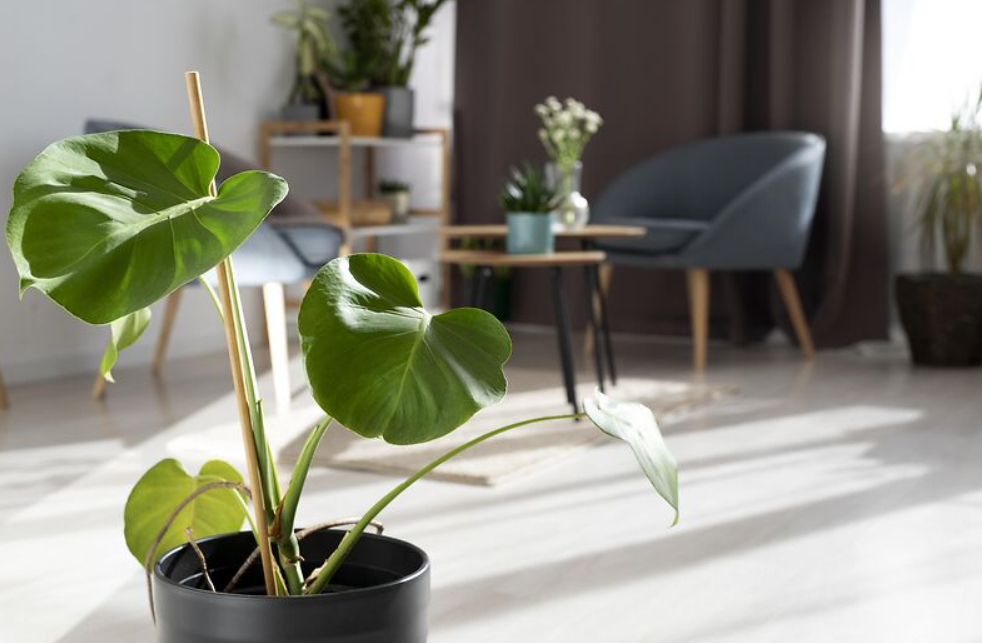What if the key to a healthier home was as simple as adding a few plants?
Air-purifying plants do more than decorate; they cleanse the air, remove toxins and make your space safer and more pleasant.
In this blog, we'll explore how air-purifying plants work, the pollutants they tackle, insights from the NASA Clean Air Study, and tips on maximizing their benefits.
We'll also highlight some of the best plants for air quality that are beautiful and easy to care for.
How Do Air-Purifying Plants Work?
Through photosynthesis, plants take in carbon dioxide and emit oxygen.
However, some indoor plants for health go a step further by removing harmful toxins from the air.
This process is called phytoremediation. It involves plants absorbing pollutants through their leaves and roots, breaking them down into harmless byproducts.
The NASA Clean Air Study
The NASA Clean Air Study, conducted in the late 1980s, was a pioneering project identifying specific plants capable of purifying the air.
NASA found that some natural air purifiers greatly remove common indoor pollutants. Among these pollutants are benzene, formaldehyde, trichloroethylene, xylene, and ammonia.
Specific Pollutants and the Plants That Remove Them
-
Formaldehyde. Often found in household products like adhesives and cleaners. Plants like the Peace Lily and Spider Plant effectively absorb this toxin.
-
Benzene. Present in smoke and paint. The English Ivy and Gerbera Daisy can help reduce benzene levels.
-
Trichloroethylene. Found in solvents and cleaners. Plants like Warneck Dracaena and Chrysanthemum can mitigate its presence.
-
Xylene and Toluene. Emitted from paints and varnishes. Plants like the Bamboo Palm and Snake Plant are excellent at absorbing these chemicals.
- Ammonia. Found in cleaning products. Peace Lilies and Anthuriums are great for reducing ammonia levels.
Tips to Maximize the Benefits of Air-Purifying Plants
-
Diversity is Key. Different plants target different pollutants. Combining a variety of air purifying flowers ensures a broader range of toxins are removed.
-
Placement Matters. Plants should be placed in areas where air quality might be poor, such as near electronics, kitchens, and bathrooms.
-
Regular Maintenance. Keep plants healthy by watering them appropriately and ensuring they get enough light. Dust their leaves regularly to maintain their efficiency.
- Use Multiple Plants. For significant air-purifying effects, use multiple plants. NASA recommends having one plant per 100 square feet of space.
Beautiful and Easy-to-Care-for Air-Purifying Plants
-
Spider Plant (Chlorophytum comosum). Known for its ease of care and ability to thrive in low light, the Spider Plant is a champion in removing formaldehyde and xylene.
-
Snake Plant (Sansevieria trifasciata). Also known as Mother-in-law's Tongue, this plant is almost indestructible and excellent at filtering benzene, formaldehyde, trichloroethylene, and xylene.
-
Peace Lily (Spathiphyllum). The Peace Lily plant produces beautiful white flowers and removes various pollutants, including ammonia and benzene.
-
English Ivy (Hedera helix). Ideal for hanging baskets or pots, English Ivy is particularly effective at reducing airborne fecal particles and formaldehyde.
- Aloe Vera. While commonly known for its healing properties, Aloe Vera also helps clear formaldehyde and benzene from the air.
Bringing air-purifying plants into your home is a natural way to improve your living environment.
These houseplants for clean air not only add aesthetic value but also significantly improve indoor air quality, making your home a healthier place to live.
Visit Terra Plants and Flowers to explore our wide range of natural air purifiers and find the best plants for air quality.
Let's create a cleaner, greener home together.
Image is Designed by Freepik
